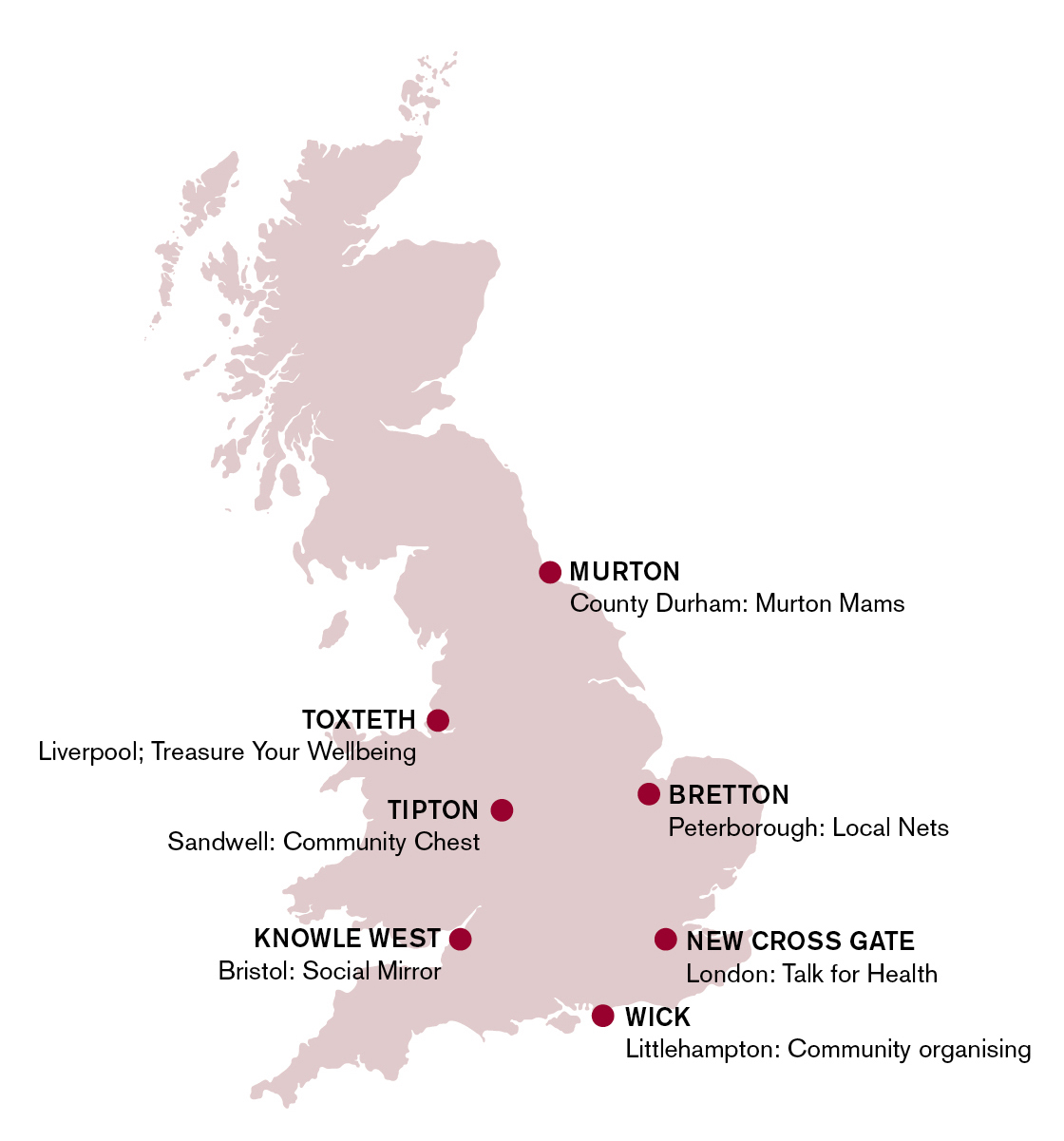In our new report released today, we assess the many benefits that relationships can create in local areas, but warn that the government cannot assume that it can simply cut back the state and expect communities to spontaneously bloom and deliver government policy.
Five years on from the beginning of our Big Lottery funded Connected Communities programme, today we publish our final report in partnership with the University of Central Lancashire and London School of Economics. After mapping social networks in communities in seven locations around the country and working with local residents to test new ways of building social connections and reducing isolation, we speak with the benefit of prolonged engagement and practical experience in diverse communities. Our report details the findings of this practical research with 3,000 people around England.
The report explains how working with local people to invest in ‘community capital’ – that is the potentially beneficial relationships and connections that all communities have access to – can create a range of significant benefits to people’s lives. These include dramatic increases to wellbeing, more active citizenship, economic advantages, and potential savings to public services’ budgets. One pilot study – a social group set up by and for single mothers in County Durham - found that strengthening people’s social networks reduced people’s use of certain health services by up to 34%. In a context when various areas of government policy from the Big Society to the NHS’s strategy are looking to the ‘renewable energy of communities’ coming forward to contribute to better social outcomes, our report shows from real life examples that this really can happen, and that when people are given the platform to connect with one another in communities, they can be a powerful force for change.
However, with local authorities expecting another round of budget cuts of up to a further 40% at November’s comprehensive spending review, we suggest that it is unlikely that public services will have adequate funding to help carry out this kind of ‘communitarian’ government policy, with councils warning that they will be reduced to focusing on explicit statutory responsibilities like waste collection and concessionary travel.
 We say that it is the connections within communities that are so valuable – the community capital – not simply the existence of groups of local people. As such, those who wish to reap the benefits from communities need to appreciate that it takes engaged, deliberative, sometimes difficult work to bring people together. Effective communitarian public policy requires planning, careful engagement with people, the weaving and brokering of social networks, and ongoing support for communities. Beyond simply willing strong communities into existence, it is important to understand an area’s social networks – including which individuals or groups might be particularly prone to isolation, to involve local people in creating solutions to problems, and to create the platforms and opportunities for relationships to flourish, placing connectivity as an explicit goal of public life.
We say that it is the connections within communities that are so valuable – the community capital – not simply the existence of groups of local people. As such, those who wish to reap the benefits from communities need to appreciate that it takes engaged, deliberative, sometimes difficult work to bring people together. Effective communitarian public policy requires planning, careful engagement with people, the weaving and brokering of social networks, and ongoing support for communities. Beyond simply willing strong communities into existence, it is important to understand an area’s social networks – including which individuals or groups might be particularly prone to isolation, to involve local people in creating solutions to problems, and to create the platforms and opportunities for relationships to flourish, placing connectivity as an explicit goal of public life.
The report includes:
-
Key findings from a social network analysis and wellbeing survey of 2,840 people, including a greater indication of the vital importance of social connections to wellbeing. Social connectedness correlates more strongly with wellbeing than social or economic characteristics such as long term illness, unemployment or being a single parent.
-
Accounts of our practical work around the country to strengthen community capital, including the innovative Social Mirror digital social prescribing app, and Murton Mams, a co-produced social club for single mothers supported by the local NHS Trust.
-
Evidence that building social connections in this way works – with pilot projects leading to increases in subjective wellbeing of 15% and reductions of certain NHS services of 34%.
-
A new theory of change for public services, third sector organisations and other groups who have an interest in community capital and deriving the benefits of social connections. This is summarised as’ Understand, Involve, Connect’: Understand the assets and networks in an area, Involve people as co-creators of the solutions they stand to benefit from, and Connect people to one another through brokering people to sources of support or weaving new networks together.
-
Recommendations for how community capital can be grown in local areas, such as:
-
Local authorities, housing associations, and adult social service providers should position their staff or, budget allowing, hire new staff to perform community engagement roles aimed at widening and deepening citizen’s social networks to support greater wellbeing and reduce social isolation.
-
Health and Wellbeing Boards and Clinical Commissioning Groups should set aside funding and develop strategic commissioning frameworks which prioritise peer support groups for various patient groups.
-
Innovative approaches to identifying and spending new sources of funding should be explored, such as local authorities co-producing community projects with residents using the 15 per cent of Community Infrastructure Levies reserved for neighbourhoods, or through Local Enterprise Partnerships and charitable trusts specifically making small grand funding available for previously.
'Community Capital' is the final report in our Connected Communities programme.

Join the discussion
Comments
Please login to post a comment or reply
Don't have an account? Click here to register.
A great report, no doubt, and very useful for those at the sharp end of campaigning to make it easier for communities to develop. The 2015 Digital Challenge Awards once again highlighted the brilliant work being done.
The 'Intelligent Communities Award' went to RunAClub - an online resource platform - and their stats now show they've surpassed 10,000 members (mostly young people, but including other ages) supported via 1400 staff running 8,500 sessions. That is a lot of clubs that may never have been able to manage without an easy admin platform - and a resource that local authorities everywhere should be aware of.